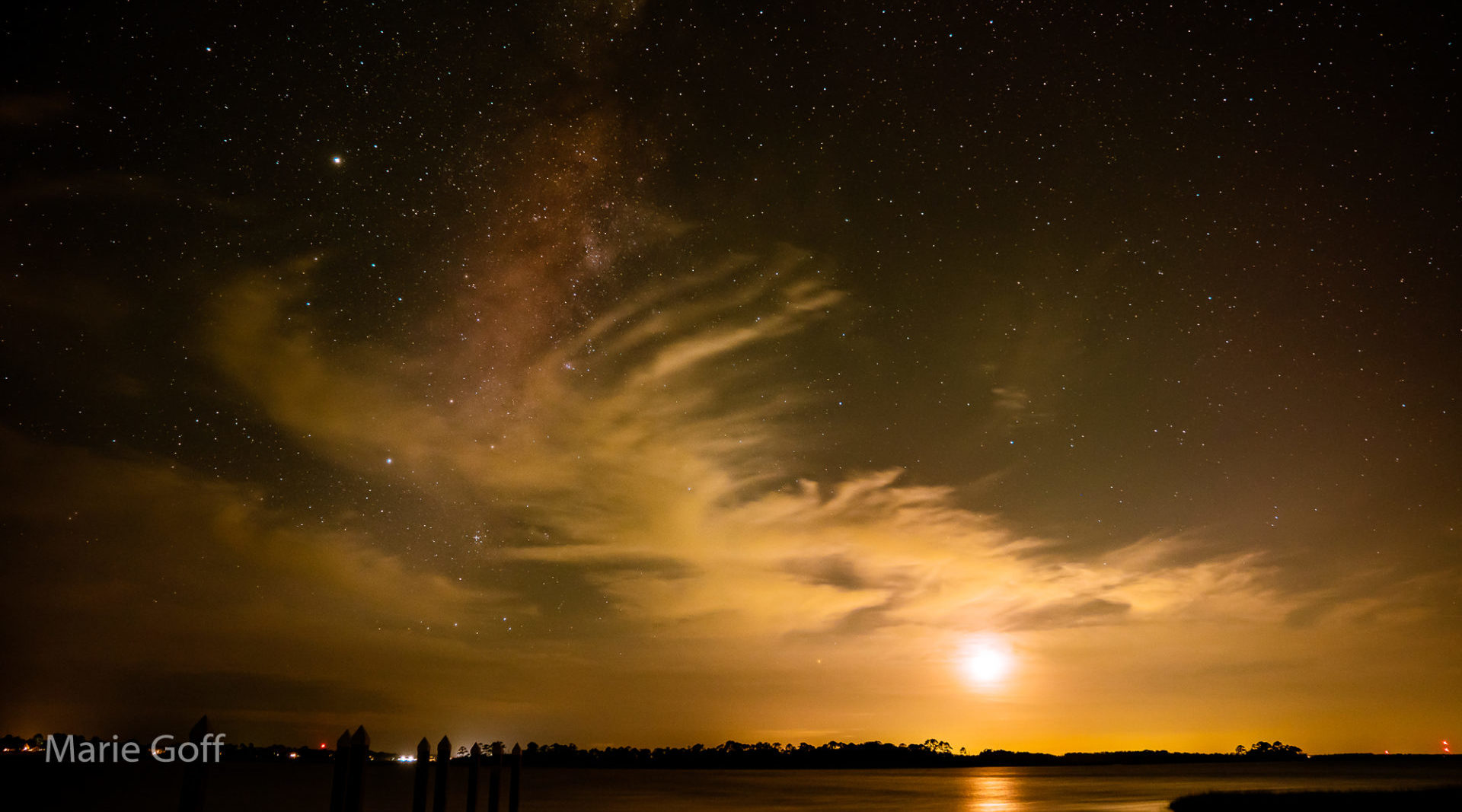Finding your way by knowing your stars
I love stars. They’re beautiful beyond description. They function like a giant perfectly calibrated clock.

And they are a connection to the Biblical patriarchs, who a few millennia ago, saw and spoke of the very same constellations we can see tonight. But my appreciation for these truths has been a journey. Just as the stars themselves can be a journeyer’s navigational guide, and you don’t have to be a NASA research scientist to get your head around any of it.
My fascination with stars began as a Cub Scout during a camping trip wherein we “cubs” paired up with a group of older Boy Scouts and ventured somewhere out along the Wateree River in Kershaw County. This was now more than 50 years ago, but I still remember us darting around in a big multi-acre field surrounded by miles of piney woods playing “flashlight tag,” running and laughing until we could barely catch our breath.
Eventually, we collapsed on our backs for what seemed like an hour in the cool grass and looked up at what appeared to be a zillion stars in the clearest blackest sky.

The scoutmaster, Mr. Frierson, a retired Army officer, pointed out a lot of the constellations. Though difficult to make out the various animal-and-other shapes in the sky, that particular overnight outing observing the vast starry sky impressed me far more than the field trips my elementary-school class sometimes made to the Gibbes Planetarium in Columbia. Though that too was exciting.
Stars for me are an absolute manifestation of the supreme power of God: His art, orderliness, constancy, and the miracle of 2,000-plus years ago.
Many years later in college, I took two semesters of astronomy as part of my physical science requirement studying the make-up of the planets, the relative size and composition of the stars (mostly hydrogen and helium), and the distances primarily measured in light-years from Earth to all things visible in the heavens. But that didn’t aid as much in my love of stars as it did help me better understand their nature of them.

Then in the Marine Corps during land-navigation training followed by real-world practical application, I learned much about how to traverse great distances at night using key stars and various constellations as guides.
It’s a skill set that benefits me even today; as it can you, especially in South Carolina.
Here’s why: In terms of geographic location, S.C. is between 33 and 35 degrees north of the equator, which means that on a clear night, our skies offer magnificent views of the celestial heavens. And for nighttime navigation purposes, we have a perfect view of the North Star (aka Polaris) all year long, which is critical if you are out hiking, struggling to find your way home, and you’re without GPS capability or any recognizable terrain features.
If you know your stars – and frankly they’re not too difficult to learn – you will never be lost.

The basics are simple.
FIRST: Remember that the stars (like the sun) generally rise in the east and set in the west. Not every star, which is why I say “generally” and will explain momentarily. And not that they’re actually rising; but we’re turning toward them. Think about it. The earth is always rotating eastward toward everything in the heavens.
SECOND: Pick up a star guide and learn to identify a few of the constellations and asterisms (star groups that are not full constellations). Easiest to recognize on a cold winter’s night when the moisture is chilled out of the air, are magnificent constellations like Orion, Canis Major, Taurus, and the Pleiades (my favorite by the way) among others.
THIRD: Learn to recognize and find the Big Dipper (part of the Great Bear) and Cassiopeia. This is key because these two stellar bodies – the Dipper and Cassiopeia – rotate counterclockwise around Polaris every single night of the year. They are always positioned at different points throughout the night around Polaris. And Polaris never rises or sets.
If you know what season of the year it is, you can find the position of either body relative to Polaris and determine what time of night it is. Moreover, find either the Big Dipper or Cassiopeia, then Polaris, and you will easily establish your bearings – knowing precisely which direction is north, south, east, or west – every single clear night of the year.
Simple, right?
South of the equator is a bit more challenging, but we’ll save that for another discussion.
– South Carolina native W. Thomas Smith Jr. is a former U.S. Marine infantry leader and counterterrorism instructor. Visit him online at http://uswriter.com.
By W. Thomas Smith, Jr.







